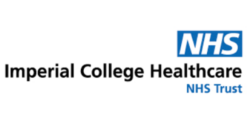Research programme elements
In order to deliver insights from the community around the hospital redevelopment at St Mary’s, we designed a multi method programme of user insight research. That consisted of a survey, three participatory workshops, community outreach, semi structured interviews and a background literature review of existing Trust material relating to the redevelopment.
Survey
Kaleidoscope used the research framework to design a survey which allowed respondents to navigate to the sections relevant to them. Respondents were encouraged to identify as any number of the key communities the Trust had identified as a priority for this piece of work – this was a deliberate design decision recognising that people in and around the Trust often held more than one identity or relationship e.g. staff member and patient or carer. We received a total of 248 responses to this survey, 60% of which identified as having multiple relationships with the Trust.
Workshops
We ran three participatory workshops, a fundamental principle of which was mixed membership between staff, patients and community members. Kaleidoscope carefully design events with psychological safety at the fore, helping participants to meet as equals and enabling them to hear perspectives they may not have heard otherwise.
In one discussion on kindness we registered shock from patients that staff didn’t have their own canteen, replied to with feelings of staff guilt that why they should have anything better ‘while patients still got scans in car parks’. This interaction not only helped participants think in a different way, but also enabled those who wore multiple hats to feel they weren’t participating as an employee, or as a patient, but as a person.
Furthermore, this combination of backgrounds meant that conversations on potentially difficult topics (e.g. ‘what features of a hospital would you prioritise?’) were respectful but nuanced – giving real insight and inviting compromise.
Community outreach
Our approach to involving groups which are often ‘seldom heard’ is to go to them, rather than expecting them to come to us. As such, we identified a range of community groups we would be particularly keen to hear from and contacted them to specifically link into existing meetings we could join them for in order to explore redevelopment issues.
Through a programme of identification and recruitment, working with local voluntary and community services umbrella organisations, 32 community organisations and staff networks were identified. Where possible, individuals within these organisations were sent information in relation to this consultation and were invited to participate. Where individual contacts were not identified, an invitation was sent to a generic ‘admin’ email for that organisation.
A range of community groups was identified and contacted, including youth groups, community groups for specific ethnic minorities, faith groups, disability networks and lesbian, gay, bisexual, trans, queer + networks.
These groups were initially asked if there were existing meetings the research team could join to explore redevelopment issues. Where this wasn’t possible, a separate meeting lasting approximately 45 minutes was scheduled at a time suggested by the group.

